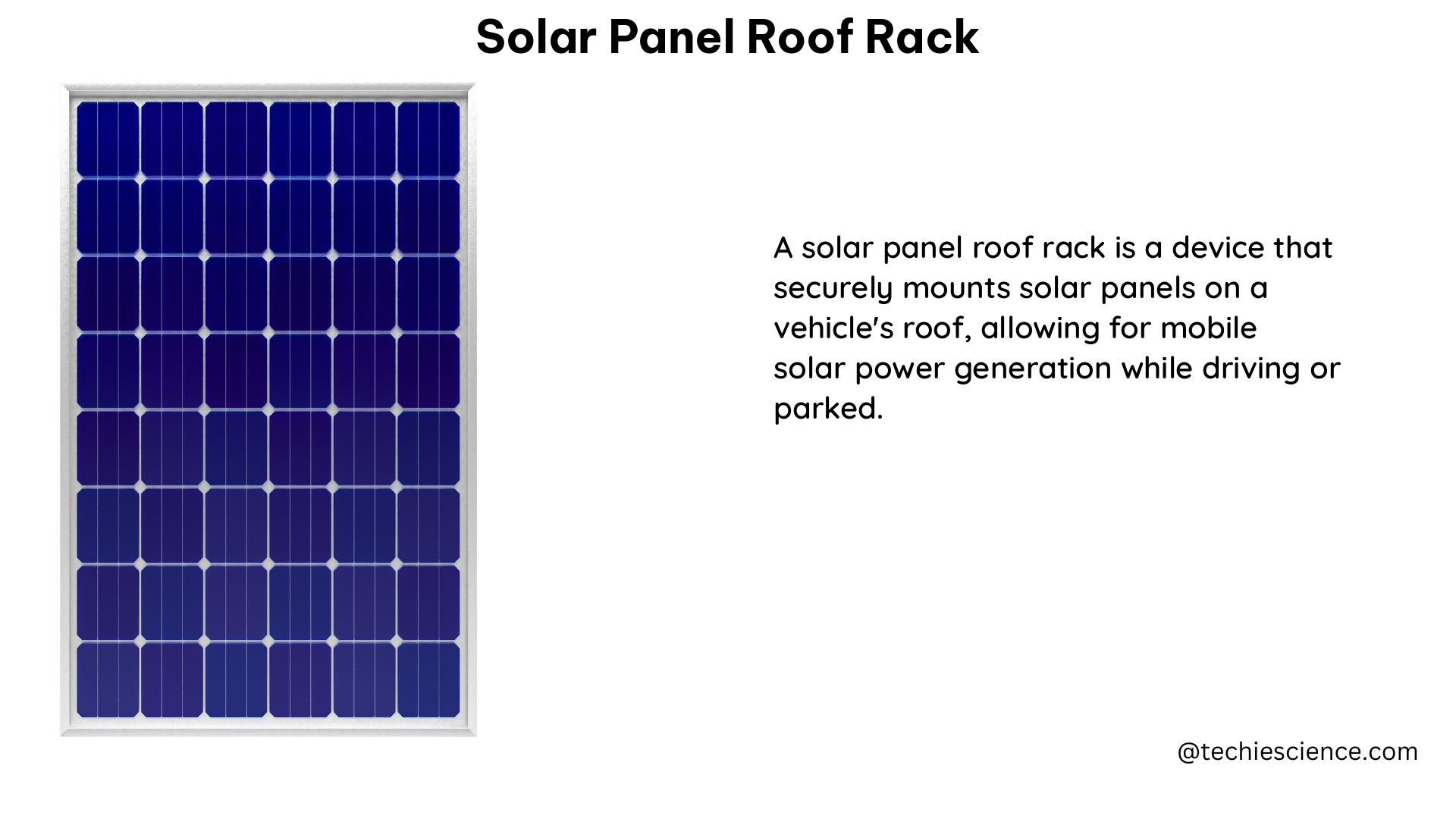Solar panel roof racks are an essential component of a solar panel installation, providing a secure and stable mounting system for solar panels on a roof. These racks are designed to withstand the weight of the solar panels, resist wind forces, and distribute the load evenly across the roof structure. In this comprehensive guide, we’ll dive deep into the technical specifications and key considerations for installing a solar panel roof rack.
Weight Capacity and Load Distribution
The weight capacity of a solar panel roof rack is a critical factor to consider. Solar panels can weigh anywhere from 30 to 50 pounds per panel, and the roof rack must be able to support the total weight of the system. The rack must be designed to distribute the weight evenly across the roof, minimizing point loads and preventing damage to the roof structure.
To ensure proper weight distribution, solar panel roof racks typically feature a robust aluminum or steel frame that spans multiple roof attachment points. The frame is designed to distribute the weight over a larger surface area, reducing the risk of localized stress on the roof. High-quality roof racks can support up to 2,000 pounds of weight, accommodating even the largest solar panel arrays.
Wind Resistance and Aerodynamics

Solar panel roof racks must be able to withstand the forces of wind, which can be particularly significant in high-wind areas. The rack design must minimize wind resistance and prevent the solar panels from becoming airfoils that could cause damage to the roof or the panels themselves.
Manufacturers of solar panel roof racks often test their products in wind tunnels to ensure they can withstand wind speeds of up to 150 mph. The racks are designed with streamlined profiles and strategic bracing to reduce wind drag and prevent the panels from becoming dislodged or damaged during high-wind events.
Roof Penetrations and Waterproofing
To secure the solar panel roof rack to the roof structure, the installation typically requires penetrations through the roof. These penetrations must be properly sealed to prevent water intrusion and protect the integrity of the roof.
High-quality roof racks come with specialized mounting hardware and sealants to ensure a watertight seal around the penetrations. The mounting hardware is often made of corrosion-resistant materials, such as stainless steel or heavy-duty aluminum, to withstand the elements and maintain a secure connection over time.
Adjustability and Orientation
Solar panel roof racks must be adjustable to allow for optimal solar panel orientation and tilt angle. This is crucial for maximizing the energy output of the solar panel system throughout the day and across the seasons.
The best solar panel roof racks feature adjustable tilt angles, typically ranging from 0 to 45 degrees, and allow for easy orientation adjustments to track the sun’s position. This flexibility ensures that the solar panels can be positioned to capture the maximum amount of sunlight, optimizing the system’s energy production.
Materials and Durability
Solar panel roof racks are typically constructed from aluminum or steel, which are strong, durable, and corrosion-resistant materials. These materials are chosen for their ability to withstand the elements, including exposure to UV radiation, rain, snow, and extreme temperatures.
High-quality aluminum roof racks are often anodized or powder-coated to further enhance their resistance to weathering and corrosion. Steel racks may be galvanized or painted to provide similar protection. The choice of materials and finishes can significantly impact the long-term performance and lifespan of the solar panel roof rack.
Cost Considerations
The cost of a solar panel roof rack can vary widely, depending on the size of the system, the type of roof, and the complexity of the installation. On average, the cost of a solar panel roof rack can range from $1,000 to $5,000, with larger systems and more complex installations typically costing more.
It’s important to factor in the cost of the roof rack when budgeting for a solar panel installation, as it is a critical component that can significantly impact the overall project cost. Additionally, the quality and durability of the roof rack can affect the long-term maintenance and performance of the solar panel system, making it a worthwhile investment.
Conclusion
Solar panel roof racks are a crucial component of a successful solar panel installation, providing a secure and stable mounting system for the solar panels. By understanding the technical specifications and key considerations, such as weight capacity, wind resistance, roof penetrations, adjustability, and material durability, you can ensure that your solar panel roof rack is properly installed and optimized for long-term performance.
Whether you’re a DIY enthusiast or working with a professional solar installer, this comprehensive guide will equip you with the knowledge and insights needed to make informed decisions about your solar panel roof rack. By prioritizing quality and attention to detail, you can maximize the efficiency and longevity of your solar panel system.
Reference:
- DIY Solar Installation Guide
- Roof-Mounted Solar Panels: Challenges and Solutions
- 5 Things to Know When Installing Flat Roof Solar Panels

The lambdageeks.com Core SME Team is a group of experienced subject matter experts from diverse scientific and technical fields including Physics, Chemistry, Technology,Electronics & Electrical Engineering, Automotive, Mechanical Engineering. Our team collaborates to create high-quality, well-researched articles on a wide range of science and technology topics for the lambdageeks.com website.
All Our Senior SME are having more than 7 Years of experience in the respective fields . They are either Working Industry Professionals or assocaited With different Universities. Refer Our Authors Page to get to know About our Core SMEs.